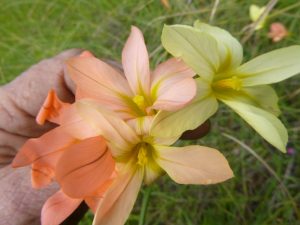Horses and Plant Toxins
In Southern Australia, there are a number weeds that are toxic to horses. Many of these weed species can occur in pastures. Some species have to be eaten in large quantities to have a noticeably deleterious effect. This occurs when toxic weed species dominate a pasture. These toxic weed species may be regarded as food or medicine when consumed in small quantiles in a mixed pasture.
Alternatively, some weed species can have serious effects in small quantities, e.g. the Cape tulips, one-leaf Cape tulip (Moraea flaccida) and the less common two-leaf Cape tulip (Moraea miniata). These are of African origin. Note that the genus Moraea has been changed from Homeria.
There is an online resource produced by Rural Industries Research and Development Corporation (RIRDC) entitled “Plants Poisonous to Horses – An Australian Field Guide”. Plants are listed by common names under the headings of the conditions caused by their toxic chemistry; a good overview of equine symptoms. Similar symptoms can be caused by various species, amounts and interactions of toxic chemistry. The list can be very helpful if you note the diet of your horse in places of forage, and consider toxic profiles of plants and interactions consumed. Seasonal or weather conditions, pH of the soil and other salient factors modify symptoms. It would be even more useful if the Field Guide could also be accessed from alphabetic lists of common and scientific names of the plants.
Food eaten by horses passes straight through the digestive system which results in many weed seeds surviving to be neatly deposited in nutrient-rich dung. By contrast, ruminants such as cattle re-digest the gut contents more than once which results in the destruction of much or all of the weed seed load. This has lead to the call for horse riders to collect the dung of their mounts when riding through environmentally sensitive areas, similar to dog owners. This practice would reduce the financial and environmental impost caused by weeds.



